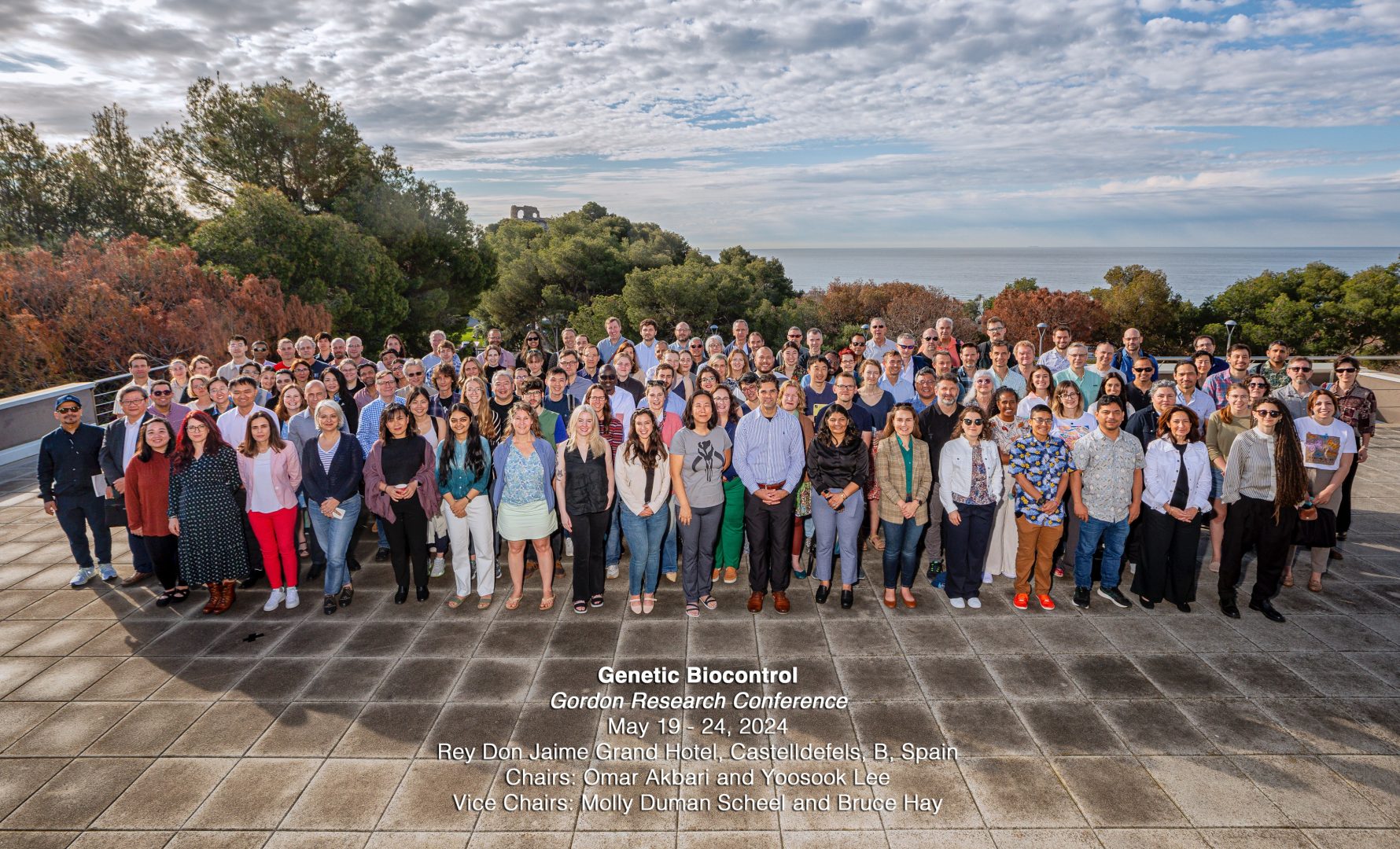Last week, I had the privilege of attending the Genetic Biocontrol Gordon Research Conference: Enhancing Public Health, Food Security and Biodiversity in Barcelona, Spain. The five-day event aimed to promote collaboration, communication, and cutting-edge science in the field of genetic biocontrol. It also provided an opportunity for researchers, developers, and practitioners from around the globe to share their knowledge, exchange lessons learned, and discuss best practices in the field. As part of the conference, I delivered a presentation focused on how stakeholder engagement can inform the design and governance of emerging biotechnologies, such as gene drive technologies.

Participants of the 2024 Genetic Biocontrol Gordon Research Conference in Barcelona, Spain. Photograph: Gordon Research Conferences
The National Academies of Sciences, Engineering, and Medicine’s (NASEM) Gene Drives on the Horizon (2016) report – which I contributed to as part of a dedicated study committee – highlights the value of engagement for gene drive research, noting that “the outcomes of engagement may be as crucial as the scientific outcomes” of the research to decisions regarding the potential release of gene drive technologies.
One of the points explored in the report and in my talk, is that when considering the question of who should be engaged, we can think of engagement for gene drive research in terms of concentric circles, with “community members” at the center. These are groups of people who have a geographic connection to the potential field release site or the place where the technology is meant to be introduced. At the next level, we have “stakeholders”, defined as those who have a professional or personal interest that could inform decisions about the technology. Finally, we find “publics”, which are audiences who don’t necessarily have a direct connection to the technology but can contribute to democratic decision-making and may have a say in how we govern emerging technologies.
How do local communities participate in gene drive research?
Moving from theory to practice, I discussed my work with the Genetic Biocontrol of Invasive Rodents (GBIRd) program – a partnership of diverse experts from world-renowned universities, government and not-for-profit organizations exploring the use of gene drive technology to control invasive rodents on islands. Invasive rodents, such as rats and mice, are a major driver of species extinctions, particularly on island ecosystems, where they threaten birds and other endangered species. As part of my work with GBIRd, we organized a two-day interactive workshop with a diverse group of stakeholders, including scientists, conservation leaders and policy experts. The aim was to discuss perspectives on research design and risk assessment related to the development of a gene drive mouse for biodiversity restoration as well as gather input on the design of future community-level and stakeholder engagement.
We delved into several questions with regards to engagement, including when, where and with whom engagement should occur, in what form and with what focus. Findings showed that participants were enthusiastic about being engaged upstream from the final development of the technology and appreciated working with developers open to exploring uncertainties, questions and doubts. Overall, the workshop showed the value of engaging early in the research process and provided valuable input to inform future engagement on gene drive technologies.

2018 GBIRd Annual meeting in Exmouth, Western Australia
I also spoke about some of the more recent projects I am involved in focused on the genetic biocontrol of aquatic invasive species in the Great Lakes region of Northern America. I have partnered with Dr. Michael Smanski, a scientist at the University of Minnesota, to organize workshops with diverse stakeholders and rightsholders to help inform his research on the genetic biocontrol of the invasive common carp. I have also embarked on a project funded by the U.S. Fish and Wildlife Service to engage with stakeholders and tribal groups in the Great Lakes region regarding genetic biocontrol of other invasive species such as the sea lamprey, zebra mussels, and phragmites. While not the only strategy under consideration, gene drive approaches are an important part of these conversations.
As research on gene drive technologies advances, it is clear that the successful development and implementation of these tools will not only depend on technical and scientific innovation, but also on our ability to build meaningful stakeholder and community engagement. Robust and responsible engagement is key to define priorities and inform research design and governance pathways.
